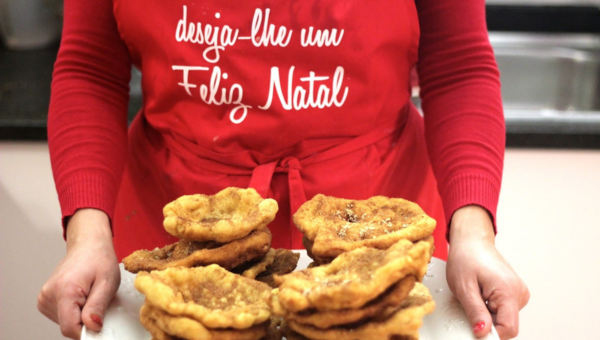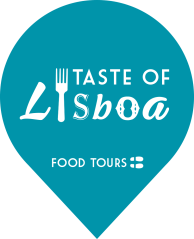How to celebrate Christmas like a Portuguese

In Portugal, Christmas means two things: family and food. And when it comes to family, the more, the merrier. Grandparents tend to be the center of the celebrations and, usually, it is at the grandparents’ house that the family gathers to celebrate. The food is what is on everyone’s mind. It should be enough to feed a literal army, and with enough variety to satisfy everyone involved.
Like in many other countries in Europe, the main event is Christmas Eve, on the evening of the 24th, although the 25th is also a day spent with the family, extending the Christmas cheer for another day.
If you want to see a play-by-play of Christmas in Portugal, read along:
December 24th, 9AM
The day will start early, and the kitchen will be busy all throughout the journey, since most food needs to be made on the same day. The most time consuming process will be the preparation of the desserts, since so many of them have to be fried, so that starts as early as possible. There’s a lot of different recipes that vary according to the different parts of the country. The most famous are sonhos and filhós, sweet doughs often enriched with pumpkin, sweet potato, chickpeas or carrots; azevias, coscorões and rabanadas, which are the Portuguese version of a French toast, eaten almost exclusively during the Christmas holidays. But there are infinite regional varieties of fried sweet treats, known nationwide as fritos de Natal. What all of them seem to have in common is the method (frying), the use of an incredible amount of eggs, and the presence of cinnamon and orange or lemon as an aromatic (no, vanilla is not used in traditional Portuguese baking). All of this variety will mean hours in front of the stove, and the cook is bound to end up smelling of oil and cinnamon.

Photo by Doces e Sobremesas
Those who want to stay away from fried foods still have some options, like the humble but delicious aletria, a simple dessert of Arabic origin, made with milk, sugar and vermicelli noodles, and flavored with (you guessed it) cinnamon sticks and lemon peels.
December 24th, 11AM
While the frying is taking place, someone will have to take on the task of getting the items that are rarely homemade, but bought at the family’s favorite pastelaria. The king of these is aptly named bolo rei [inserir link para post de IG sobre onde comprar bolo rei em LX], a fruit cake that tastes more like a sweet bread, infused with Port wine and full of nuts, dried and candied fruit. For those who may not be into candied fruit, a variation called bolo rainha, that is queen cake), might be more suitable, and seems to be the favorite of the younger generations.

Photo by Ruralea
Other traditionally store bought desserts include lampreia de ovos (pictured above), a truly epic (and cholesterol raising) dessert made essentially of sugar and egg yolks, as well as the broa castelar or, for the less traditional, the tronco de Natal (Yule log), a French chocolate cake that has become quite popular in Portugal in recent years.
This trip to the pastelaria won’t be a relaxing one, since the poor souls tasked with this mission will be joining the many customers trying to get their fresh cakes, and if the Christmas treats were not ordered in advance, one might risk leaving the store empty handed. Also, for those who are not fans of spending the 24th getting oil burns from all the frying, pastelarias can also supply all the azevias and coscorões that one might need for a delightfully sweet Christmas Eve.
December 24th, 6PM
By now, all the frying will be done, and the mesa dos doces (literally sweets table) should be set up. The mesa dos doces is a table where all the desserts, cakes, dried fruits and nuts will be throughout the holidays. Many families will set this table and keep it stocked until New Years Day, or in some cases until Epiphany Day, on the 6th of January.

Photo by Lisbon by Clarisse
Now comes the time for the main, and here it seems that the salted cod reigns supreme. Whether in its more classic Christmas form, boiled and accompanied by potatoes and vegetables, and drizzled with olive oil (and sometimes sprinkled with chopped raw garlic), or made in one of its other 364 ways, to appease the younger crowds, codfish is the most common food consumed on Christmas eve.

Photo by Ruralea
However, up north, many people traditionally have octopus as their protein of choice, and getting your hands on a nice octopode can be quite the struggle during this time of the year. Often people will buy it in advance and freeze it, which also helps in softening the meat, and reducing its chewiness. In the Algarve seafood makes more of an appearance, and clams in particular are a popular food to consume at this time.

Photo by Notícias Magazine
Traditionally, for religious reasons, meat could not be consumed before midnight, so Christmas Eve dishes in Portugal still tend to be more fish based, but nowadays exceptions can be made, especially for children, as the roasted suckling pig.
December 24th, 7PM – 8PM
Although dinner time in Portugal tends to be around 8 to 9PM, especially for meals involving any kind of celebration, it is highly likely that the family starts arriving earlier, in order to help with the preparations. It’s normal for the table to be set with the help of the guests, and here even the children can lend a hand, because the preparations themselves are viewed as a communal experience. Extra desserts or savory delicacies will be brought by family members, along with maybe a special wine, or a brandy procured from a family friend. In Portugal, artisanal or homemade drinks are very valued, and usually brought for these special occasions, in order to be shared by all.
The gifts brought by the guests will sit under the Christmas tree until it’s time for them to be opened, or will be placed near the nativity scene, which despite no longer being as common as the tree, is still very popular, particularly among more religious families.

Photo by Decor Facil on Pinterest
December 24th, 8PM-midnight
Once the family sits down for the Christmas Eve meal, they will stay there for a long time, as this will be the center not only of the meal, but also of all the subsequent fraternizing that will take place. There will be several cheeses, olives and bread to start the meal, most likely there’ll also be a soup, and the main dish, served in copious amounts. The desserts will come with the coffee, and certainly accompanied by some sort of alcohol to aid digestion. On this holiday, Port wine is particularly popular, but more robust brandies will also be available to accompany the coffee and help cut through all the fat and sugar of the sweet treats. All of these steps are to be taken at a leisurely pace, because one must wait for midnight before opening the presents.

Photo by Notícias Magazine
Although nowadays, like in most parts of the world, children ask Santa for gifts, this wasn’t always the case in Portugal, where parents would claim that it was baby Jesus who was responsible for their Christmas presents, and would leave them in their shoes. Some more old school families still maintain this tradition, and some even combine the two stories to bring the Christmas magic to their kids. However, since presents are opened at midnight, parents have to get creative in order to not blow their covers, so each family has their own ways of distracting the children while Santa/baby Jesus does their job. Once the presents from Santa (or baby Jesus) arrive, the rest of the family can open the rest of the gifts and continue with Christmas Eve.
December 24th, after midnight
Customarily, this would be the time to join the midnight mass, which is still a very popular tradition, especially in more rural parts of the country. In urban areas it is now less common, and the family will stay at home for as long as their bellies and their eyelids can handle.
Another rural tradition, that unfortunately seems to be disappearing, is the Christmas bonfire, (the madeiros, or lenhos), that usually takes place in the center of villages or by the church, and whose goal is to make a huge fire that burns high for several days, around which people talk, eat and drink. This custom, that is pagan in origin, tends to start after the midnight mass, although in some villages it can start even before the Christmas Eve supper. In other villages there’s also the tradition of gathering a few singers, warm from the wine and the Port, and going around the village singing the “Boas Festas” to their neighbors, hoping to be received in their homes with more food and drinks.
December 25th, 1PM
Christmas day is a calmer and sleepier affair than the previous evening, but it’s still another opportunity for the family to get together for another meal. For Christmas lunch, the most famous dish is undoubtedly roupa velha, literally “old clothes” (pictured below), which is a sauteed dish made from the leftovers of the previous night’s codfish and vegetables, chopped into smaller pieces. It might not sound like the most appetizing meal, but it’s surprisingly comforting. Also, since it is now possible to eat meat, there will probably be a second dish, which can be lamb or baby goat for the more traditional, or chicken or turkey for the more modern families, who like to keep up with the global Christmas trends.

Photo by N Cultura
Often, families will spend Christmas Eve with one side of the family, and Christmas day with the other side of the family, which might involve quite a bit of traveling, especially if the families happen to be from different parts of the country. This also means that the Christmas lunch can bring with it more exchanges of presents from family that haven’t met each other yet, as well as the very common handing of envelopes with money to the younger members of the family, usually from grandparents, aunts and uncles, accompanied by the classic “É para compares um geladinho” (it’s for you to buy yourself an ice cream), even if the envelope contains 20, 30 or even 50 euros (depending on the generosity of the family members). Lunch is once again followed by a marathon of conversations around the lunch table, accompanied by drinks and petiscos (snacks) to keep stomachs as well stocked as the sweets table will be during this occasion as well as during the following days.
It might be dark by the time the guests finally abandon their meal, and head on home, in a food coma, but certainly also full of holiday cheer. Until next year!
If you also celebrate Christmas, we wish you a wonderful time with your family! For more Portuguese food and culture, follow us on Instagram where we post regular tips from Lisbon to the world! #tasteoflisboa
Feed your curiosity on Portuguese food culture:
10 Christmas Foods You Must Eat in Portugal
The world of Portuguese conventual sweets
Iconic foods and places Lisbon locals love
The oldest restaurants and cafes in Lisbon
Real people, real food. Come with us to where the locals go.
Signup for our natively curated food & cultural experiences.
Follow us for more at Instagram, Twitter e Youtube
